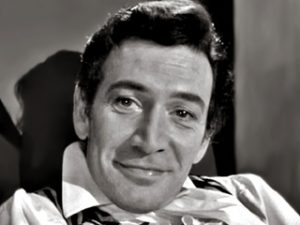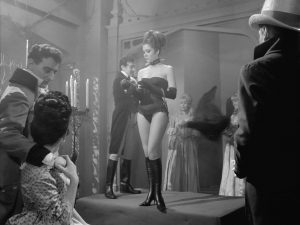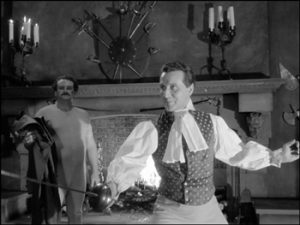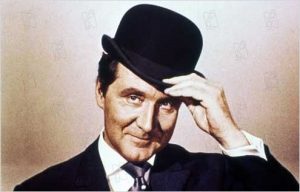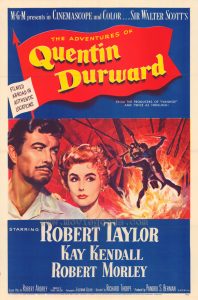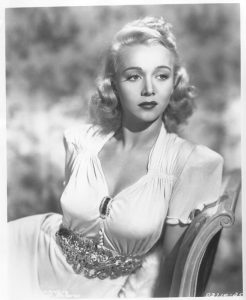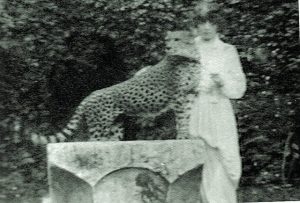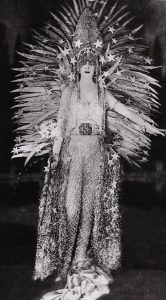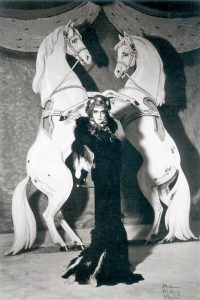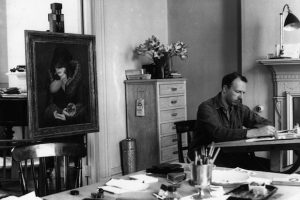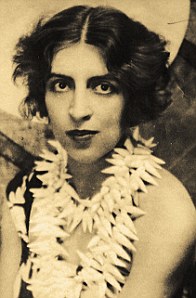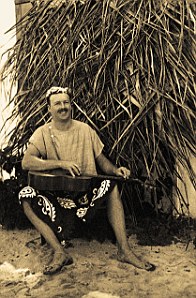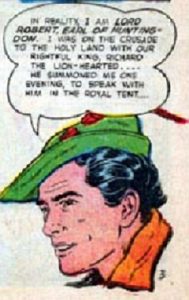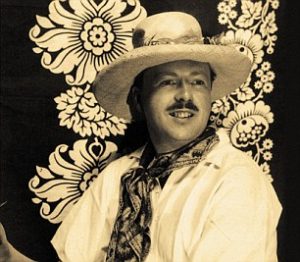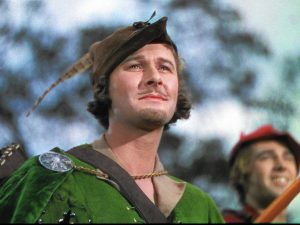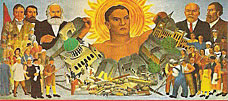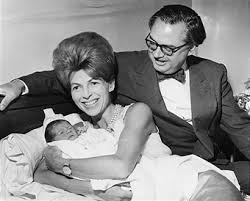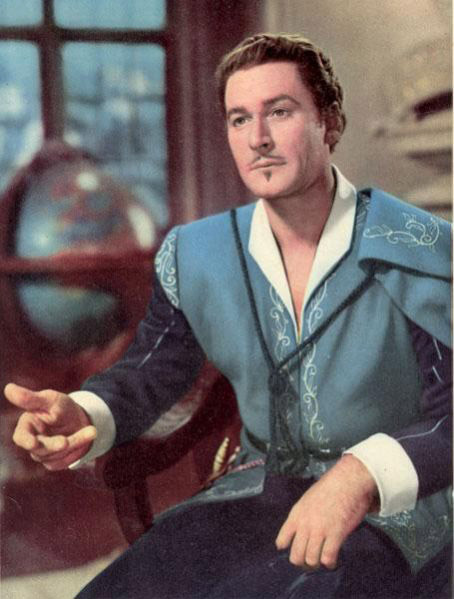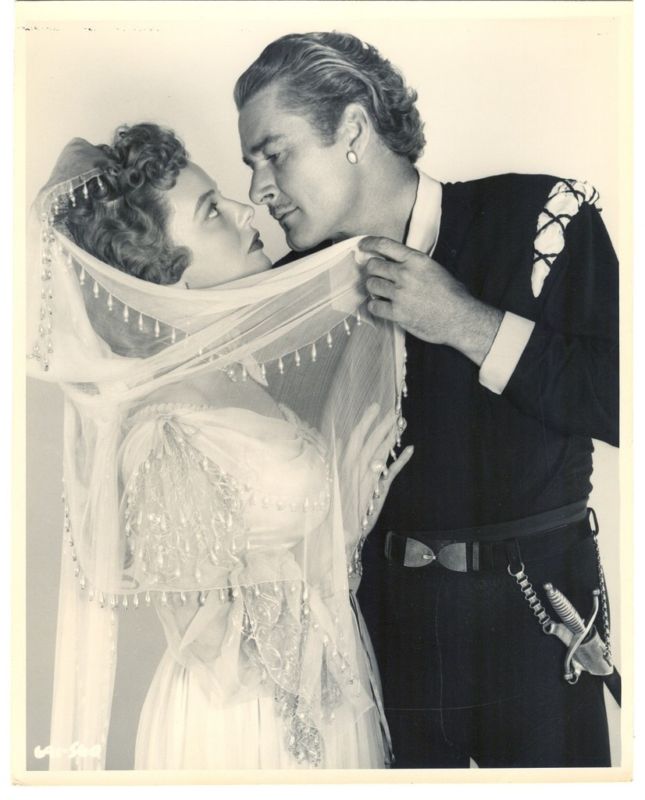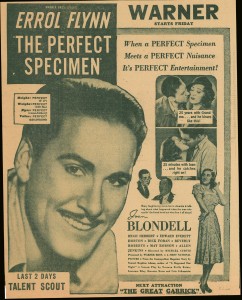Hello all Errol fans!
I found this excellent and truthful biography written by Meredith Grau of Errol and I thought you just might enjoy it as much as I did!
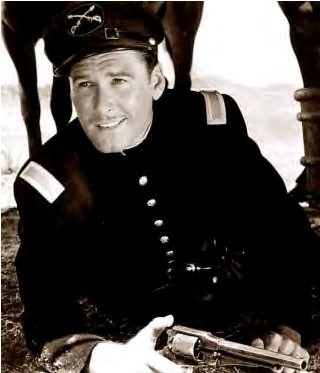
Errol Flynn: swashbuckler, rascal, swaggering screen star with a sinful dose of sex-appeal. I incorporated a lot of S’s into that description in order to produce the steaming hot alliteration that this actor deserves: “Tsssssssssssssssssss… Ouch!” (Don’t get burned, ladies).
During Errol’s reign as the pinnacle action star in Tinsel Town, having inherited the sword from silent hero Douglas Fairbanks, he powered Hollywood with enough electric charisma to solve the entire nation’s energy problems. However, his glamorous, alluring, and death-defying persona of light-hearted nonchalance, while widely accepted by fans, was both true and false. He was promoted as a handsome devil, lady-killer, and man’s man (albeit in an occasional pair of tights) who always got the bad guy and could– and for the most part did– have any woman he wanted. Indeed, Errol was an adorable bad boy, and debates continue to wage about just how naughty he really was.
Permanently emotionally scarred by the childhood abuse he suffered from his mother, Errol also lived with unresolved feelings of neglect. All but abandoned by both parents at school while they went abroad, he spent most Christmas breaks alone in an empty schoolhouse, which in his own mind, felt like a penitentiary. His rebellion against this isolation built him into a troublemaking adolescent, begging for both attention and discipline. He loved to push buttons, but he circumnavigated anyone who sought control over his life. Errol would continue to both seek and avoid the company and demands of others. He lacked the necessary trust and support demanded of obedience. As such, the teen who got kicked out of school would grow into the movie star who consistently irked and disobeyed Jack Warner in business and loathed all authority figures in general. His quest for affection can too be interpreted in his sexual indulgences. Errol had (and boasted of) many lovers, made many conquests, but he sadly had little experience or understanding of love. Flings were pleasurable distractions that never satiated the need he had to find something more. His life was an eternal adventure for some mysterious, missing thing– his own personal El Dorado. What he truly sought– acceptance, enduring love, and happiness– were within arm’s reach, but his itchy feet and lack of trust compelled him to seek beyond the horizon. After all, if one keeps moving, he has no time to be hurt.
Needless to say, Errol had a way of… overdoing it– maniacally burning the candle at both ends in the hopes of quelling the inner madness and despair that had and would never find safe harbour. He wandered the world, spending his youth voyaging from place to place and country to country on almost ludicrously unrelated business ventures– from journalism to running a tobacco plantation in New Guinea! He would also spend his later years literally adrift. Aboard his yacht, the Zaca, he found a sense of quiet away from the pain of the past and the superficiality of his Hollywood life, but this was a sorry substitute for the merciful sensation of peace that comes with the true satisfaction of one’s happiness. The closest he came to joy was Jamaica. Spending time with equally conflicted friends throughout his life, those that unfortunately exacerbated and influenced his darker tendencies (“Jack” Barrymore, Bruce Cabot, etc.)
Errol drank too much, smoked too much, and eventually suffered from morphine addiction, which weathered his initially exquisite, God-given form into a prematurely old body, a reflection of his broken spirit.
The great shame of his life was the tagline “In Like Flynn,” an unfortunate leftover from the statutory rape scandal that forever ruined Errol’s personal reputation and public image. Found innocent of the accusations made against him by Betty Hansen and Peggy Satterlee in the early forties, the court case under modern investigation bears all the tell-tale signs of a set-up, and it is often hypothesized that politicos with a vendetta against the less than financially generous Jack Warner decided to take down his biggest star to teach the mogul a “lesson.” Whether or not Errol had earthly fun with either of these ladies, whether or not he knew their true ages if so, remains debatable. In any case, both Betty and Peggy, who had once enthusiastically volunteered for a place in the movie star’s bed, mysteriously changed their tunes when the prospect of money was dangled before in their faces.
While the contradictory evidence produced in court ended in a mercifully “not guilty” verdict, the event itself had a devastating effect upon Errol, who grievously felt a slight against his personal character. He had already endured the shame of receiving a 4F classification, which kept him out of WWII and insulted both his bravery and masculinity, but this was worse. His popularity had been boosted, but he found himself lampooned as a distasteful, sexual joke. This was a grave personal disappointment, as he idolized his educated, scientist father. His desire to prove himself as an honourable and intelligent man– being impressively self-taught for the most part– revealed itself in his love of writing books, studying any and everything, and approaching more mature cinematic material with a talent that had only improved and aged with him. Unfortunately, Errol found himself locked into the inflexible Hollywood system– a disaster for someone with his need for freedom– and he was never fully able to exercise the personal depth and desire he had for his art. He felt that his gifts were purely superficial and considered himself a laughing stock. In keeping with his mistrustful mindset, while he desired respect for his work, he brushed off all compliments, never believing that his efforts had been worthy. This is the true tragedy, because they absolutely were!
This Irish lad and “Tasmanian Devil” had only done some modest theatrical work and had completed a meager handful of films, including Australia’s The Wake of the Bounty (playing Fletcher Christian, under whose leadership one of his own descendants had mutinied!), when he achieved his breakthrough performance in Captain Blood– with ultimate leading lady Olivia De Havilland, no less. In the demanding, starring role, Errol would prove himself a clear natural before the camera, and this unexpected cinematic success, accomplished by an unknown nobody, consequently initiated an unparalleled career in the movies. His simple delivery of daunting lines, which would leave a lesser actor feeling foolish or tongue tied, and his assertive, graceful movements on the screen– in whatever costume, from whatever era, holding whatever prop– revealed a man who exuded the confidence of an overgrown boy. He presented himself as a brazen acrobat, completely disinterested in consequences and desirous only of living with relished abandon. His love interests were always of secondary importance to the rush of battle– a parallel with his own life. From pirate (The Sea Hawk), to cowboy (Dodge City), to war pilot (The Dawn Patrol), to sad anti-hero (That Forsyte Woman), to martyr (Uncertain Glory), to icon (Robin Hood), Errol was always excitingly up to any challenge, and as a result, he continuously succeeded in getting his audiences to believe in and cheer for him in whatever rogue battle he fought from film to film. What’s more, he also looked damn good doing it.
They don’t make Errol Flynns anymore, not that “they” could if they tried. So many filmmakers and performers try to duplicate the magic that Errol naturally possessed, but Hollywood’s current offerings of reconstituted leading men lack the elegance, spirit, and sincerity of Flynn. His characters, with their mortal vanity and foolhardy embrace of danger, exist at a level of liberty that today’s action heroes, with pecs but no personality, cannot understand. No… No one will ever be “in like Flynn” again. But that is only because Flynn is forever.
______________________________________________________________
Below you find the comments posted by fans, which all our fellow Flynnians may enjoy:
Beautifully written post. xox
Thank you kindly, lady! I appreciate it!:)
Very nice write up!
Answer by Meredith:
Thank you, kindly! Errol is such a difficult personality to capture, and is too often portrayed unsympathetically. It is always nice to hear positive reactions to my depictions. Thanks for stopping by! :)
I have read an awful lot about Mr. Flynn and I must say you have written a very fair and concise profile of my favourite star. An extremely indulgent librarian and in 1966 let a skinny thirteen year old with glasses check out from the Adults Only section, My Wicket, Wicket Ways. (“I believe Errol Flynn led a colourful life,” she said smiling at me!). It probably changed my life. Pick yourself up when they knock you down and keep laughing lads and lasses.
That’s what I learned from him. Just one note: Murder at Monte Carlo, a “lost film” was his second film, not Captain Blood. Lovely job, Meredith!
Answer by Meredith:
Thank you so much for your kind words! I appreciate the note as well, which I will certainly correct and incorporate. Errol’s an easy fellow to love, but I respect him as well, which I feel was what he would have appreciated more. Happy Memorial Day!
Answer by Meredith:
Haha, no worries! I write so many typos that my prose might as well be in Swahili! I sincerely appreciate your comments and am very appreciative for the catch on “Murder at Monte Carlo.” I always forget about that one! I am with you 100% on Mr. Flynn. His work and presence always put me in a good mood and bring me back to life when I’ve had one too many punches. It’s always nice to meet another fan. Take care and stay in touch! :)
Dear Meredith Grau!
Thank you so much for your exquisite reportage on Errol Flynn is the nicest I have ever read in my life. It is written with such inside to his psychology and portraying a realistic picture of this great actor and superb man he was. Errol Flynn has given us so much pleasure with his movies and still does when we see him on TCM, which is always a thrill!
Answer by Meredith:
Thank you for your response! I truly admire and respect Mister Flynn, in addition to finding him hugely entertaining. The fan loyalty that has remained so long after his premature death is very moving. He’s still the one to beat as far as I’m concerned when it comes to charismatic leading men.
Very nice write-up but may I point out one mistake: the marriage of Damita and Curtiz is a myth, it never happened. One of many Wiki mistakes!
Extremely well done! Very thoughtful, and revealing! You might like The Errol Flynn Blog, too.
Answer by Meredith:
Yes! Was introduced to the EF Blog not long ago! So great to see a community carrying on his memory and correcting some misperceptions many have about the man, his life, and his character. Thanks for your response! :)
An extremely well written article Meredith – congrats!
Answer by Meredith:
Thank you, my friend! It gladdens me that there is still so attention and respect devoted to Mr. Flynn. Of all the actors I touch upon here, he seems to be the one about whom I can initiate the most dialogues. He remains the ultimate screen hero and a truly beautiful, misunderstood, complicated man. ;)
Excellent article. There is one mistake, under his picture at the top of the page, you have his birthday as July 20, 1909. He was actually born on June 20, 1909. Other than that, this was a very well written article that focused on Flynn as a person and not just him as a salacious figure in movie history– which, as a fan of Flynn, is much appreciated.
Answer by Meredith:
Ooh! Thanks for the catch! I write so fast most of the time, and by the time I have read and reread, all the words start blending together! I will make the correction right away. Thanks for stopping by and for your lovely comments. The public’s love of Flynn continues unabated since his death, which I believe is something that would warm his heart, so long as the messages passed along are honest. :)
Such sincere and fitting description of a one-of-the-century icon and this larger-than-life while self-destructive hero of ours! For decades have passed, Errol is still with us because we truly love, admire and sympathize with him. He was and still is the most handsome, dashing, magnetic mega star. RIP, the great Errol of ours.
I may add:
Your writing is so delicious and your analysis of Errol is very close to the truth!
Enjoy!
— Tina

